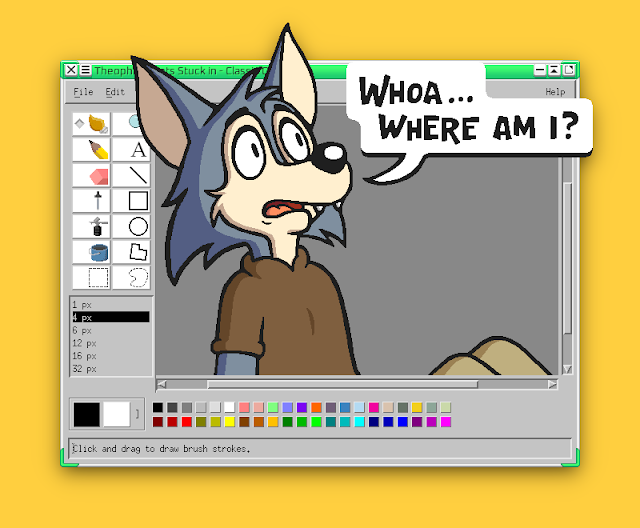AI Research: The Power of Click-and-Drag Image Manipulation
Image manipulation is one technological frontier that has witnessed considerable breakthroughs because to AI research in today's digital environment. With the advancement of click-and-drag AI technology, it is now feasible to modify pictures quickly and accurately. The implications, advantages, difficulties, and potential applications of AI-powered picture modification are examined in this article.
Introduction
The goal of AI research is to develop intelligent machines that can carry out activities that normally call for human intellect. Image manipulation, which include modifying or improving digital photos, is one such endeavor. Users may easily alter photographs by clicking and dragging particular components, such as objects, backgrounds, or colors, thanks to click-and-drag AI technology. The way photographs are manipulated has been revolutionized by this user-friendly interface, providing new opportunities for both experts and amateurs.
1. What is AI research?
The study and creation of models and algorithms that imitate or emulate human intelligence are all included in AI research. AI researchers work to develop systems that can see, reason, and learn from data by utilizing machine learning techniques. Advanced algorithms are used to enhance and modify digital photographs as part of the field of image manipulation in AI research.
2. Understanding image manipulation
Image manipulation is the process of modifying or improving photographs to produce certain results. This approach has historically needed manual editing with difficult tools like Photoshop. However, users may quickly edit photographs in a more natural and user-friendly way with click-and-drag AI technology. This innovation makes it possible for anyone with little to no editing skills to produce graphics that seem professional.
3. The significance of click-and-drag AI technology
Both professionals and ordinary users must consider the important consequences of click-and-drag AI technologies. It makes picture editing easier by doing away with the need for complicated equipment and in-depth expertise. With a few clicks and drags, users can now produce the required effects, saving time and effort. Additionally, this technology democratizes picture editing, opening it out to a larger audience.
4. Benefits of AI-powered image manipulation
There are various advantages to the introduction of click-and-drag AI technology. First of all, it enables real-time editing, giving users immediate visual feedback as they alter photos. This interaction makes editing more enjoyable and encourages experimentation. AI algorithms can also analyse and comprehend the content of images, generating clever suggestions and automating tedious activities. These tools improve productivity by streamlining the editing process.
5. Challenges and limitations
AI-based picture alteration has many benefits, but it also has drawbacks and limitations. Keeping a balance between user control and automation is one difficulty. Sometimes, AI algorithms might make assumptions or mistakes that call for user involvement to get the intended result. Furthermore, the caliber and variety of the training data affect how accurate and reliable AI systems are. Biases in the data might have unexpected effects or lead to incorrect interpretations of user intent.
6. Ethical considerations
The development of AI-based picture modification creates moral questions. The risk of false information and phone images grows as technology becomes increasingly adept of producing hyper-realistic and convincing images. In order to prevent abuse and defend people's rights, society must address the appropriate use of AI in picture alteration by adopting rules and laws. In order to foster responsibility and confidence, it is also critical to provide openness in AI systems.
7. Applications of click-and-drag AI in various industries
Click-and-drag AI technology is used in a variety of sectors. It enables the rapid and effective construction of aesthetically appealing campaigns in marketing and advertising. Utilising technology, graphic designers may quickly prototype concepts and refine them in response to customer input. Enhanced product visualisation helps e-commerce systems by allowing buyers to interact with virtual goods before making a purchase. Additionally, click-and-drag AI has uses in gaming, virtual reality, and augmented reality to improve user experiences.
8. Impact on graphic designers and artists
The role of graphic designers and artists has been profoundly impacted by AI-powered image modification. Although the technology simplifies certain elements of their profession, it also creates new difficulties. In order to keep up with these developments, designers and artists must use AI as a tool to boost their creativity rather than to replace their knowledge. Professionals may attain new levels of productivity and explore innovative artistic possibilities by adopting click-and-drag AI.
9. The future of AI-powered image manipulation
The potential for AI-powered picture alteration is enormous. We may anticipate increasingly complex and user-friendly editing tools as AI algorithms continue to advance. Editing experiences that are immersive and interactive will be made possible by the combination of AI with other cutting-edge technologies like augmented reality and virtual reality. Additionally, AI-driven picture alteration could go beyond still photographs to encompass three-dimensional and video information.
Conclusion
To sum up, click-and-drag Image modification has been transformed by AI technology, becoming more user-friendly and accessible. It has several advantages for both experts and novice users, speeding the editing process and fostering creativity. However, there are also ethical issues and problems that need for careful use and ongoing research. Future picture alteration has enormous potential for increasing visual narrative and creativity as AI algorithms advance.
FAQs
1. Can click-and-drag AI technology replace professional image editors?
No, click-and-drag AI technology simplifies image manipulation but cannot entirely replace the expertise of professional image editors. It serves as a valuable tool to enhance their work and streamline certain tasks.
2. How can click-and-drag AI technology benefit marketers?
Click-and-drag AI technology enables marketers to create visually appealing campaigns quickly. It facilitates the creation of engaging visuals and prototypes, helping businesses communicate their messages effectively.
3. Are there any risks associated with AI-powered image manipulation?
Yes, AI-powered image manipulation can raise ethical concerns, such as the potential for misinformation and fake visuals. Responsible use, transparency, and regulation are essential to address these risks.
4. Can click-and-drag AI technology be applied to videos and three-dimensional content?
While click-and-drag AI technology primarily focuses on static images, there is potential for its application to expand to videos and three-dimensional content in the future. Further advancements in AI research may make this possible.






0 Comments